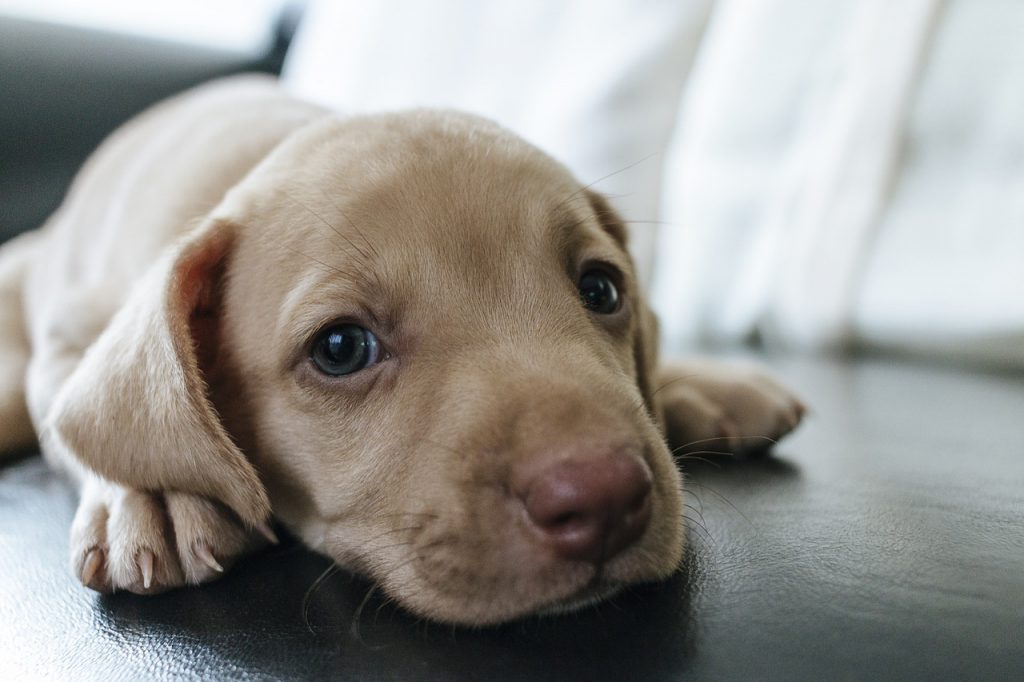One of your team members at the dog training school, Elise Legerstee, attended a seminar on physical exertion and puppies last week, given by dog physical therapist Margriet Koopman. What she found out will help us answer our client’s questions on puppy mobility in an informed way.
Here it is, in a nutshell:

- Enough sleep is necessary for young dogs in order to have a normal growth.
- Stress can have a negative impact on growth.
- Training involving repetitive motions or explosive movements should not take place before the
growth plates are closed. In a dog of average size most growth plates will close at around 14
months but some of the growth plates of the pelvis close much later: at around 22 months
for a Border Collie. - Neutering: Interferes with the release of hormones at adolescence, and with muscle development. Ideally, dogs should not be neutered before 2 years of age.
- You may have heard the five-minute rule-of-thumb (that a puppy should only walk for five minutes for every month
of age.) This can useful as a general guideline, but many more factors besides age come into play. It would be much more useful to educate
owners to recognize signs of fatigue in their young dog. Signs of fatique are:- Passivity
- Droopy eyes
- Panting
- White of the eyes turning red
- Change in body posture
- Half-mast ears
- Making errors
- Reduced coordination
- Shaking
- A pacing gait.
- The type of exercise the owners are providing is also very important so owners should know what is
appropriate exercise for puppies and young dogs and what is not.- Appropriate exercise for young dogs:
- Walking,
- Trotting and
- Galloping over short distances.
- Make sure not to exhaust the dog. It is better to go for multiple short walks instead of one long walk.
- Make sure a young dog learns to deal with multiple surfaces, like long grass, mud, loose sand,
shallow water, soft surfaces and hard surfaces. - Other good learning experiences: walking uphill (slowly); downhill (slowly); stepping over branches; playing with a calm older dog;
playing with another pup of equal size, age and energy level.
- Inappropriate exercise for young dogs:
- Jumping,
- Running after and/or catching a ball or frisbee,
- Playing or running on a slippery surface.
- If a dog school offers play sessions with other pups these sessions should not take place at the end of the class.
- Appropriate exercise for young dogs:
- Stair walking can be learned from 4 months on short, non-slippery, low-angle steps.
- Harnesses: The throat is very sensitive. An (accidental) leash jerk can cause a lot of damage.
A harness distributes pressure more evenly. (For more information about harnesses, read our article here)- This is especially important for growing dogs and for
dogs of a breed that is prone to herniated discs in the neck (Teckel, Bulldog). - The harness should fit well.
- A harness should have a Y-shaped chest piece rather than a horizontal strap across the shoulder (to reduce risk of biceps tendon injury).
- This is especially important for growing dogs and for
Author: Elise Legerstee, OhMyDog! Hondenschool Den Haag; Language check, Laure-Anne Visele, OhMyDog! Hondenschool Den Haag
Photo credit
Puppy with blue eyes: Courtesy of Jeff Andrade, downloaded from Pixabay on 20 Nov 2018. License: CC0.
Further reading
- Balsa, I. and Robinson, D. – 2016 – Juvenile Orthopedic Disease in Dogs & Cats – (illustrated blog post by veterinarians, EN)
- Turner, S. and Burgers, M. – 2014 – Elke pup een goede start – (book by ethologist, NL)
- Visele, L.-A. – 2017 – A look at pro- and anti-harness claims – (blog post by zoologist, EN)
